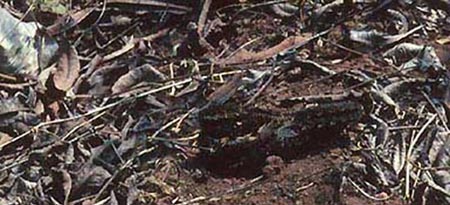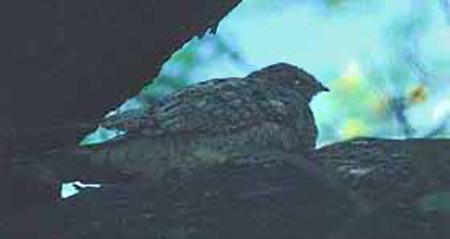| |
 |
NIGHTJARS Caprimulgidae |
- 97 species worldwide
- DR personal total: 52 species (54%), 17 photo'd
|
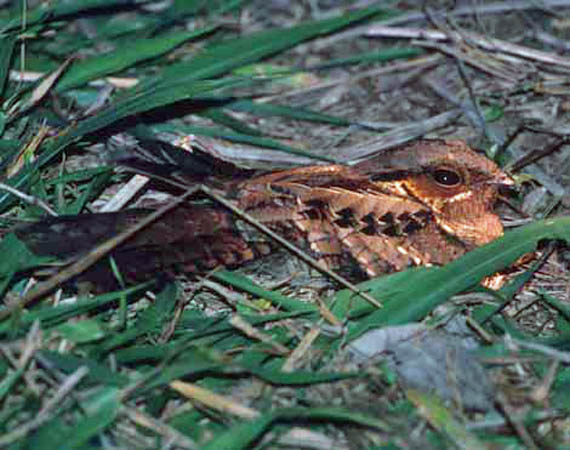 The Caprimulgidae is a family of night-flying aerial insectivores scattered around the world with most species concentrated in the tropics. Most of the world's nightjars are "typical" nightjars but some males of tropical species are among the world's fanciest birds. In South America, males of Swallow-tailed Nightjar Uropsalis segmentata, Lyre-tailed Nightjar U. lyra, and Long-trained Nightjar (above) have incredibly long and spectacular tails. In sub-Saharan Africa, Pennant-winged Nightjar Macrodipteryx vexillarius and Standard-winged Nightjar M. longipennis have incredibly modified primaries (more below on these amazing species). The Caprimulgidae is a family of night-flying aerial insectivores scattered around the world with most species concentrated in the tropics. Most of the world's nightjars are "typical" nightjars but some males of tropical species are among the world's fanciest birds. In South America, males of Swallow-tailed Nightjar Uropsalis segmentata, Lyre-tailed Nightjar U. lyra, and Long-trained Nightjar (above) have incredibly long and spectacular tails. In sub-Saharan Africa, Pennant-winged Nightjar Macrodipteryx vexillarius and Standard-winged Nightjar M. longipennis have incredibly modified primaries (more below on these amazing species).
Among the "typical nightjars," one of the most widespread in the New World is the Pauraque (left), shown here on its day-roost in leaf-scattered understory. This individual is a rufous morph; other Pauraques can be gray. The call of Pauraque can be dominant avian sound after sunset in summer from the forest edge of the Rio Grande Valley of Texas to the Brazilian Pantanal. |
 In the USA, the repetitive vocalizations of the Pauraque, Eastern Whip-poor-will Antrostomus vociferus, Chuck-will's-widow A. carolinensis, and Common Poorwill Phalaenoptilus nuttallii account for their English names. These onomatopoetic songs can bring memories. Picture a sultry, humid summer night in southeast Ohio. The day was hot and it is still warm. Chorus frogs are trilling loudly. As the sun sets fireflies appear in all directions (right). Then, as the still dark night settles, a mournful Whip-poor-will starts off to the left, and then a rhythmic Chuck-will's-widow to the right —singing at a steady pace of 25 songs per minute. I found it glorious. For some, such notes evoke sadness. Hank Williams wrote: In the USA, the repetitive vocalizations of the Pauraque, Eastern Whip-poor-will Antrostomus vociferus, Chuck-will's-widow A. carolinensis, and Common Poorwill Phalaenoptilus nuttallii account for their English names. These onomatopoetic songs can bring memories. Picture a sultry, humid summer night in southeast Ohio. The day was hot and it is still warm. Chorus frogs are trilling loudly. As the sun sets fireflies appear in all directions (right). Then, as the still dark night settles, a mournful Whip-poor-will starts off to the left, and then a rhythmic Chuck-will's-widow to the right —singing at a steady pace of 25 songs per minute. I found it glorious. For some, such notes evoke sadness. Hank Williams wrote:
Hear that lonesome whippoorwill,
He sounds too blue to fly.
The midnight train is whining low,
I'm so lonesome I could cry.
|
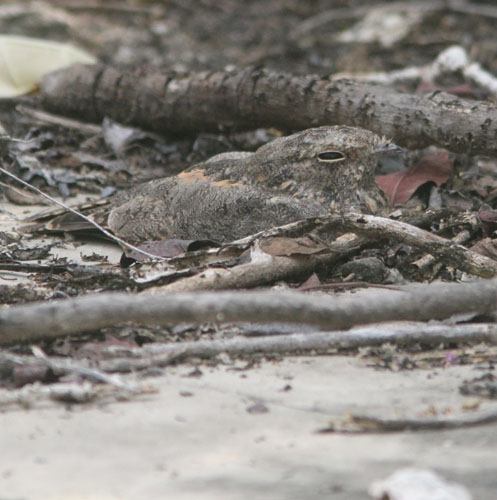 During the day, caprimulgids roost on the ground or on tree branches, so cryptically patterned on a standard-shaped body to allow them to roost safely during the day. I've been very impressed by Freckled Nightjar C. tristigma of tropical Africa and Savanna Nightjar of Asia (left). Both are so well camouflaged that they can sit quietly on a in the open all day, blending in perfectly to the background. Freckled Nightjar can even "disappear" on a bare rock. During the day, caprimulgids roost on the ground or on tree branches, so cryptically patterned on a standard-shaped body to allow them to roost safely during the day. I've been very impressed by Freckled Nightjar C. tristigma of tropical Africa and Savanna Nightjar of Asia (left). Both are so well camouflaged that they can sit quietly on a in the open all day, blending in perfectly to the background. Freckled Nightjar can even "disappear" on a bare rock.
Caprimulgids have been known by the colloquial term "goatsuckers." Cleere (1999) revisits that story, dating back to Aristotle:
| European Nightjar is one of the most widespread ... nightjars. With an entirely insectivorous diet, it tends to feed in areas with a good food supply; in the past, this often meant foraging around livestock, including goats, especially in places where the animals had been corralled for the night. During the summer, it would not be uncommon for at least some of the livestock to be in breeding condition or have newly born offspring, and females would therefore often have milk dripping from their teats. The shepherds and country people, seeing the shadowy nightjars around their animals at dusk and noticing the milk early in the morning, put the two circumstances together and believed that the birds were sucking milk during the night and that, as a result, their animals would eventually be sucked dry and go blind. |
Superstitious beliefs about caprimulgids abound around the world. In parts of the southeast U.S., it was once thought that the number of times a Whip-poor-will sang in succession indicated the number of years a man would remain a bachelor. In Sulawesi, the Diabolical Nightjar was named for the local belief that the call it made at night was the sound of it pulling out people's eyes! In truth, the remote and rare Diabolical Nightjar (below) has an open-mouth, hissing threat display that probably accounted for superstitions. Until recently it was known only from a single 1931 specimen. Today, fortunate visitors to montane Sulawesi might view, with the help of local guides and at a distance, a pair of these beautiful nightjars at a day roost: |
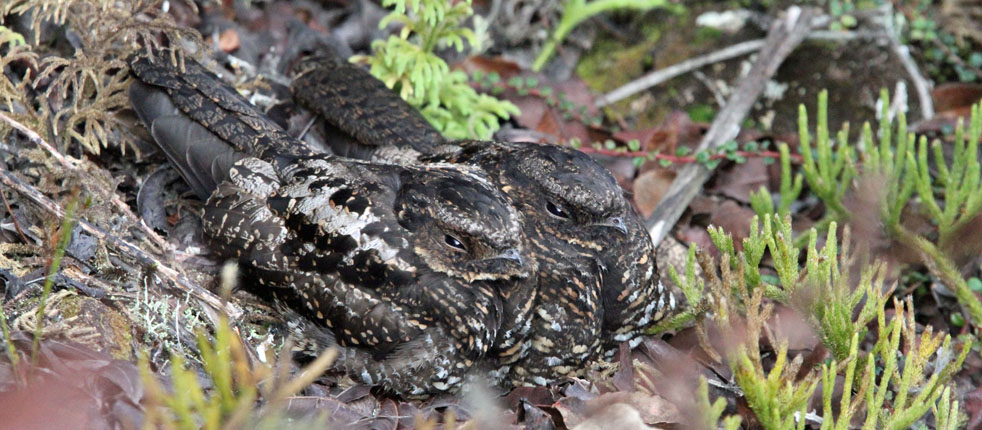 |
Diabolical Nightjar is one of 7 species in genus Eurostopodus. Using DNA "melting curves," Sibley & Ahlquist (1990) divided the caprimulgids into two separate Families: the typical nightjars [Caprimulgidae] and the "eared nightjars" [Eurostopodidae] of southeast Asia to Australia. They also divided the Caprimulgidae into two subfamilies: the typical nightjars Caprimulginae and the nighthawks Chordeilinae. The Sibley & Ahlquist approach to these and related groups has been subject to criticism (see Randi et al. 1991, Mariaux & Braun 1996). Cleere (1998, 1999) and Holyoak (2001) agreed with the two subfamily approach for nightjars and nighthawks but almost ignored the biochemical work on "eared-nightjars." Holyoak (2001) did explain that both the nighthawks and the "eared-nightjars" lack the long rictal bristles of typical nightjars, and wondered if this suggests affinity or convergence. More recently, Sigurdsson (2013) and Sigurdsson & Cracraft (2014), using molecular evidence, confirmed that "eared nightjars" are the most ancient of caprimulgids but did not separate any groups as subfamilies. The New World nighthawks arose later. Sigurdsson & Cracraft (2014), focused on New World caprimulgids, found that the Caprimulgidae consists of seven major clades, three of which occur in the New World: a “poorwill” clade (includes Antrostomus and Nyctiphrynus), a “nighthawk” clade, and a “South American” clade (all other Neotropical genera). |
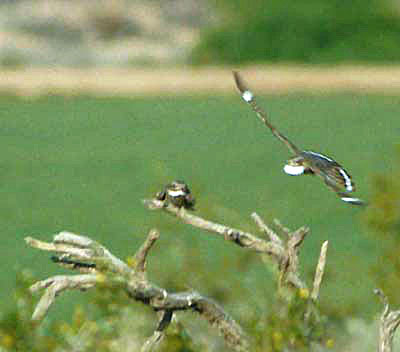 Two species of nighthawk are common in western North America: Lesser Nighthawk (right) and Common Nighthawk (below). In my shot (right, digitized from a slide), and taken on a warm Arizona early evening, a male Lesser Nighthawk concludes his booming dive to court the sitting female. His white throat is puffed out by this exertion. Two species of nighthawk are common in western North America: Lesser Nighthawk (right) and Common Nighthawk (below). In my shot (right, digitized from a slide), and taken on a warm Arizona early evening, a male Lesser Nighthawk concludes his booming dive to court the sitting female. His white throat is puffed out by this exertion.
During the hot days, both species sleep on perches, relying on their camouflage for protection. Common Nighthawks in open country can be conspicuous as they sit horizontally on fenceposts or open branches (below).
Almost all North American nightjars and nighthawks are migratory, with some species flying to Central America but nighthawks going all the way to South America. An exception are Common Poorwills in coastal California. These annually undergo torpor during the winter but can occasionally "wake up" to sing on warm evenings, even around Christmas. It is the only bird known to hibernate in the wild, or at least come close to it. Most tropical nightjars appear to be sedentary. |
 |
 |
As shown in the top photo on this page, some male nightjars in the Neotropics have outrageously long tails. The photo (just above) is another male Neotropic nightjar: Scissor-tailed Nightjar. The photo shows the long tail disappearing into the grass; the outermost rectrices extend even farther. It ranges in open country from central Brazil to northern Argentina, and the southern populations are migratory northwards from May to October. Displays include stretching its wings up vertically, then closing them rapidly while simultaneously producing a succession of up to five rapidly repeated sounds between a thump and a snap, like snapping one's fingers" (Holyoak 2001).
In central and east Africa, Pennant-winged Nightjar Macrodipteryx vexillarius has a striking black-and-white pennant streaming from the inner primaries. But the most outlandish is the male Standard-winged Nightjar (photo above right by David Shackelford of Rockjumper Birding Tours) of the arid Sahel region, just south of the Saharan Desert. Its second-to-innermost primary has evolved into a bare long shaft bearing a prominent "flag" at the end. It is almost unbelievable — science fiction would never create such a ridiculous bird. Standard-winged Nightjar displays in leks with up to ten birds together. It is polygynous and non-territorial. Those birders who have seen displays say that the "flags" at the end of the standards can look like two smaller birds chasing the larger nightjar.
The remaining caprimulgids seem prosaic by comparison to such species, but it is only the males that had the standards, pennants, and streaming tails. Female Standard-winged Nightjars (below left) look very normal. Like other Sahel species, it can be attracted to grass fires, hawking from insects after dark (Holyoak 2001). |
|
|
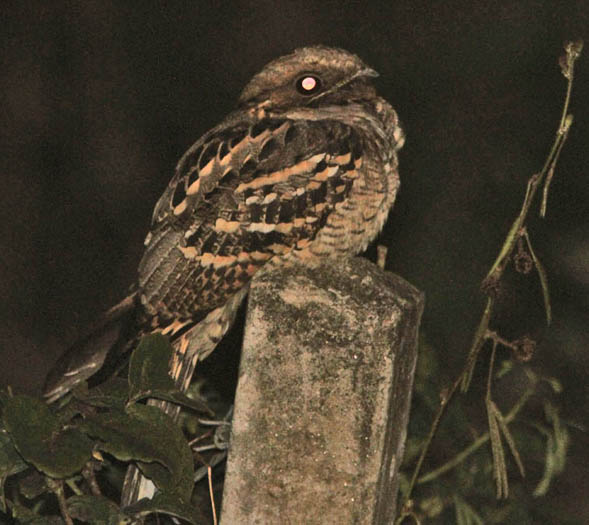 At night, nightjars sing their oft-repeated and repetitious vocals. That of Large-tailed Nightjar — which ranges from India to New Guinea — is a very loud "chonk" or "tok", like the "sound of a hammer or axe hitting timber," given rapidly for up to 15 times in series (Coates & Bishop 1997) . The calling may be from the grounds or a perch, as shown here (left). At night, nightjars sing their oft-repeated and repetitious vocals. That of Large-tailed Nightjar — which ranges from India to New Guinea — is a very loud "chonk" or "tok", like the "sound of a hammer or axe hitting timber," given rapidly for up to 15 times in series (Coates & Bishop 1997) . The calling may be from the grounds or a perch, as shown here (left).
Caprimulgids rarely fly in the day. Once in tropical Ecuador, though, an afternoon rainstorm darkened the skies and forced us indoors. This Blackish Nightjar (below) must have thought it was dusk and was chasing insects in the rain. I took this (marginal) photo from the dining room veranda.
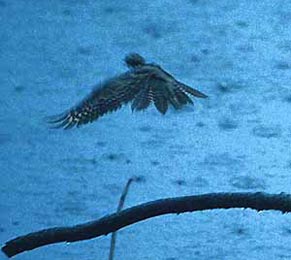 |
Nightjars do not spent much time on making nests. Most species lay eggs right on the ground, and the female incubates using her camouflage upperparts to avoid predators. I've only seen one nest — that of this Blackish Nightjar (above right). It was actually within view of our detached room at Rio Cristalino Lodge in Amazonian Brazil. The female was warming two eggs when she was accidentally flushed (but soon returned). Each day we look to see the nest — without disturbing it — but it was hard to spot even when we knew exactly where it was.
It can be equally difficult to spot a day-roosting nightjar in the forest, but on my first trip to Bharatpur, India, way back in 1978, we spotted this Jungle Nightjar sleeping on a tree limb at mid-day (lower right). Similar luck during a Ben King tour in Java produced a limb-roosting Salvadori's Nightjar C. pulchellus, one of the world's little-known species.
So, in short, seeing nightjars usually requires going out at night, listening for their characteristics songs, and having good luck with a spotlight. That led to this Spot-tailed Nightjar (below), a small nightjar of grasslands and and savanna, in the Brazilian Pantanal. Good luck with your own search! |
|
|
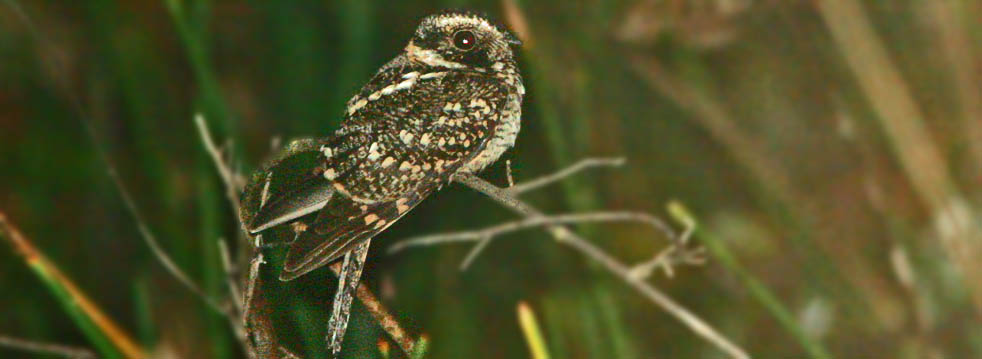 |
Photos: The full-tailed male Long-trained Nightjar Macropsalis forcipata was at Intervales NP, southeastern Brazil, on 31 July 2010. The Pauraque Nyctidromus albicollis was photographed near the forest edge during the day in the Serra das Araras, Brazil, in Aug 1999. The fire-flies at dusk is from Lynx Prairie, southeastern Ohio, in June 2019. The Savanna Nightjar Caprimulgus affinis was on the ground in Olobogu River grasslands, near Palu, Sulawesi, Indonesia, on 11 Oct 2011. The Diabolical Nightjar Eurostopodus diabolicus was along the Anaso Track in Lore Lindu NP, Sulawesi, on 28 Sep 2011. The courting Lesser Nighthhawks Chordeiles acutipennis were near Weldon, Arizona, in May 1983. The day-roosting Common Nighthawk Chordeiles minor was at Honey Lake NWR, California, on 4 Aug 2019. The male Scissor-tailed Nightjar Hydropsalis torquata was near the Rio Claro in the Brazilian Pantanal on 23 July 2010. David Shackelford photographed the male Standard-winged Nightjar Macrodipteryx longipennis in Mole NP, Ghana; my photo of a female Standard-winged Nightjar was in Mole NP, Ghana, on 13 Dec 2013. The night-perched Large-tailed Nightjar Caprimulgus macrurus was at Baan Maka Nature Lodge, Kaeng Krachan NP, Thailand, on 20 Dec 2012. The day-flying Blackish Nightjar Nyctipolus nigrescens was at at La Selva Lodge, Ecuador, in Apr 1992; and the female Blackish Nightjar on her nest was at Rio Cristalino Lodge, central Brazil, in Aug 1999. The day-roosting Jungle Nightjar Caprimulgus indicus was at at Bharatpur, India, on 18 Aug 1978. The Spot-tailed Nightjar Hydropsalis maculicaudus was near the Rio Claro in the Brazilian Pantanal on 23 July 2010.
All photos © Don Roberson, except that photo credited © David Shackelford and Rockjumper Birding Tours, and used with permission; all rights reserved.
Family Book: 
Cleere, Nigel. 1998. Nightjars: A Guide to the Nightjars, Nighthawks, and their Relatives. Pica Press, London [co-published in U.S. by Yale Univ. Press, New Haven CT]
At first glance this is an extremely attractive book covering the nightjars plus potoos, frogmouths, and owlet-nightjars. In the usual Pica Press format it has a short introduction, a sheaf of color plates illustrating all species, and then the bulk of the book is devoted to detailed species account and range maps. Much emphasis goes into lengthy descriptions and a discussion of field identification and, where known, vocalizations [it was published with a separately purchased CD]. The illustrations are by Dave Nurney. These may be fine for the Old World but, alas, the artwork of birds I know — although attractive — doesn't look much like them [e.g., Common Poorwill much to pale gray rather than rich brown-gray; Pauraque next to Poorwill is way too small; perched nighthawks much too "front-loaded"].
When I started looking up stuff I knew in the text, I found numerous errors and/or omissions. The maps look wonderfully detailed and would lead one to believe they are thus accurate, when, in fact, they are among the worst maps in any family book. The arizonae race of Whip-poor-will is shown nesting throughout California north to Pt. Reyes (!), and the nominate eastern race “wintering” in southern California and Arizona. In truth, Whip-poor-wills of the southwestern race summer on a very few isolated mountains in southern California and are an extremely rare vagrant north of these southwestern mountains. There is only one super-vagrant record of a banded bird “thought” to be the nominate race in all of California. Some or all of the ranges of at least four nightjars in Gabon are omitted (Mozambique C. fossii, Freckled C. tristigma, Black-shouldered C. nigriscapularis, and Bates's C. batesi; I've seen them all in Gabon). The pertinent information is in print (e.g., Sargeant 1993, Christy & Clarke 1994) but was apparently overlooked. If one cannot trust accounts of birds that one knows, how can the reader rely on statements about birds one doesn't know? The disappointing Whip-poor-will map was fixed by the time Cleere (1999) wrote the nightjar account for the HBW series, but some of the other errors persist in that work as well. We thus still lack an authoritative text on these families, but such a book is in the works in the Oxford Press series, as I understand it. It is said to be authored by David Holyoak who did such a nice job with the Frogmouths and Owlet-Nightjars in the Handbook of the Birds of the World, Vol. 5.
Family Book: 
Holyoak, D.T. 2001. Nightjars and their Allies: The Caprimuliformes. Bird Families of the World, no. 7. Oxford Univ. Press, Oxford.
This was the book I had hoped for when I posted the first edition of this page back in 2000. I was disappointed in the Pica Press family book (reviewed above) but this one, in the Oxford Press series, appears to be the authoritative text when it appeared in 2001. It is twice as thick and much heavier that the Pica Press book, and the species accounts are much more substantial. The literature on caprimulgids appears to have been thoroughly searched. The illustrations by Martin Woodcock, grouped together in the middle of the tome, are all of nightjars at roost on the ground, even those species that more routinely roost in trees (e.g., Common Nighthawk, Salvadori's Nightjar C. pulchellus). These are nicely done but the printed colors seem to me to be a bit too bright for many species [Common Poorwill looks the right color, though, in contrast to the Pica Press book]. There are black-and-white flight sketches for all species but, frankly, they are quite standardized and underwhelming. The text seems solid. The errors that annoyed me in the Pica Press book are gone from this production. Although the Oxford book did not anticipate the split of Whip-poor-will into two species, the localized nature of occasional breeding in southern California mountains was accurately set out for what is now Mexican Whip-poor-will Antrostomus arizonae, as was the vagrant nature of such birds in northern California [yet, as a negative, the range map still misrepresents the California range]. The four nightjars that the Pica Press book overlooked for Gabon are correctly mapped in this effort. Indeed, Holyoak even cites me for the "curious potoo-like upright stance" of a Bates's Nightjar in Gabon.
Now, reviewing this book almost 20 years later, one notices things that were not adequately anticipated, including multiple taxonomic changes. At the Order level, the Caprimuliformes are now found very early in the evolutionary sequence of the birds, far from the former spot about midway in the lists. At the genus level, Holyoak did explain that genetic evidence had already shown that Caprimulgus was polyphyletic, and would likely be split into additional genera (e.g., New World species are now in multiple genera). At the species level, the then "Grey Nightjar C. indicus" has become three species: Jungle Nightjar C. indicus, Gray Nightjar C. jotaka, and Palau Nightjar C. phalaena). Most world lists use the wonderful name Diabolical Nightjar for Eurostopodus diabolicus, but Holyoak went with the mundane "Henrich's Nightjar." But perhaps the author could not have possibly known the fate of "Vaurie's Nightjar C. centralasicus" — known from a single female collected in w. China in 1929 — as it was not debunked until genetic analysis was available [Schweizer et al. 2020 — the specimen is a fledgling European Nightjar C. europaeus of a Central Asian race]. Notwithstanding the passage of time, and multiple changes in taxonomy, nightjars remain comparatively little-known birds. This compendium of knowledge, compiled as it was some 20 years ago, is surely still the standard for a stand-alone family book, consistent with the Oxford Press series as a whole.
Literature cited:
Cleere, N. 1998. Nightjars: A Guide to the Nightjars, Nighthawks, and their Relatives. Pica Press, London
Cleere, N. 1999. Family Caprimulgidae (Nightjars), pp. 302–386 in Handbook of the Birds of the World. Vol. 5. (del Hoyo, J., Elliott, A., & Sargatal, J., eds). Lynx Edicions, Barcelona.
Christy, P., and W. Clarke. 1994. Guide des Oiseaux de la Réserve de la Lopé. Écofac, Libreville, Gabon.
Coates, B.J., and K.D. Bishop. 1997. A Guide to the Birds of Wallacea. Dove Publ., Alderly, Qld., Australia.
Holyoak, D.T. 2001. Nightjars and their Allies: The Caprimuliformes. Bird Families of the World, no. 7. Oxford Univ. Press, Oxford.
King, B. 1994. A possible sighting of Diabolical Eared-Nightjar Eurostopodus diabolicus in Sulawesi. Oriental Bird Club Bull. 19: 56–57.
Mariaux, J., and M. J. Braun. 1996. A molecular phylogenetic survey of the nightjars and allies (Caprimulgiformes) with special emphasis on the potoos (Nyctibiidae). Molec. Phyloge. Evol. 6: 228–244.
Randi, E., G. Fusco., R. Lorenzini, and F. Spina. 1991. Allozyme divergence and phylogenetic relationships within the Strigiformes. Condor 93: 295–301.
Sargeant, D. 1993. A Birders Guide to Gabon, West Africa. D. E. Sargeant, London.
Schweizer, M., C. Etzbauer, H. Shirihai, T. Töpfer, and G.M. Kirwan. 2020 A molecular analysis of the mysterious Vaurie’s Nightjar Caprimulgus centralasicus yields fresh insight into its taxonomic status. J. Ornithology 161: 635–650.
Sibley, C.G., and J.E. Ahlquist. 1990. Phylogeny and Classification of Birds: a Study of Molecular Evolution. Yale Univ. Press, New Haven, CT.
Sigurdsson, S. 2013. “The Systematics and Evolution of the Nightjars and their Allies (Aves: Caprimulgiformes),” Ph.D. Dissertation, City Univ. of New York.
Sigurdsson, S., and J. Cracraft. 2014. Deciphering the diversity and history of New World nightjars (Aves: Caprimulgidae) using molecular phylogenetics. Zool. J. Linn. Soc. 170: 506–545.
|
|
|






 The Caprimulgidae is a family of night-flying aerial insectivores scattered around the world with most species concentrated in the tropics. Most of the world's nightjars are "typical" nightjars but some males of tropical species are among the world's fanciest birds. In South America, males of Swallow-tailed Nightjar Uropsalis segmentata, Lyre-tailed Nightjar U. lyra, and Long-trained Nightjar (above) have incredibly long and spectacular tails. In sub-Saharan Africa, Pennant-winged Nightjar Macrodipteryx vexillarius and Standard-winged Nightjar M. longipennis have incredibly modified primaries (more below on these amazing species).
The Caprimulgidae is a family of night-flying aerial insectivores scattered around the world with most species concentrated in the tropics. Most of the world's nightjars are "typical" nightjars but some males of tropical species are among the world's fanciest birds. In South America, males of Swallow-tailed Nightjar Uropsalis segmentata, Lyre-tailed Nightjar U. lyra, and Long-trained Nightjar (above) have incredibly long and spectacular tails. In sub-Saharan Africa, Pennant-winged Nightjar Macrodipteryx vexillarius and Standard-winged Nightjar M. longipennis have incredibly modified primaries (more below on these amazing species). In the USA, the repetitive vocalizations of the Pauraque, Eastern Whip-poor-will Antrostomus vociferus, Chuck-will's-widow A. carolinensis, and Common Poorwill Phalaenoptilus nuttallii account for their English names. These onomatopoetic songs can bring memories. Picture a sultry, humid summer night in southeast Ohio. The day was hot and it is still warm. Chorus frogs are trilling loudly. As the sun sets fireflies appear in all directions (right). Then, as the still dark night settles, a mournful Whip-poor-will starts off to the left, and then a rhythmic Chuck-will's-widow to the right —singing at a steady pace of 25 songs per minute. I found it glorious. For some, such notes evoke sadness. Hank Williams wrote:
In the USA, the repetitive vocalizations of the Pauraque, Eastern Whip-poor-will Antrostomus vociferus, Chuck-will's-widow A. carolinensis, and Common Poorwill Phalaenoptilus nuttallii account for their English names. These onomatopoetic songs can bring memories. Picture a sultry, humid summer night in southeast Ohio. The day was hot and it is still warm. Chorus frogs are trilling loudly. As the sun sets fireflies appear in all directions (right). Then, as the still dark night settles, a mournful Whip-poor-will starts off to the left, and then a rhythmic Chuck-will's-widow to the right —singing at a steady pace of 25 songs per minute. I found it glorious. For some, such notes evoke sadness. Hank Williams wrote: During the day, caprimulgids roost on the ground or on tree branches, so cryptically patterned on a standard-shaped body to allow them to roost safely during the day. I've been very impressed by Freckled Nightjar C. tristigma of tropical Africa and Savanna Nightjar of Asia (left). Both are so well camouflaged that they can sit quietly on a in the open all day, blending in perfectly to the background. Freckled Nightjar can even "disappear" on a bare rock.
During the day, caprimulgids roost on the ground or on tree branches, so cryptically patterned on a standard-shaped body to allow them to roost safely during the day. I've been very impressed by Freckled Nightjar C. tristigma of tropical Africa and Savanna Nightjar of Asia (left). Both are so well camouflaged that they can sit quietly on a in the open all day, blending in perfectly to the background. Freckled Nightjar can even "disappear" on a bare rock. Two species of nighthawk are common in western North America: Lesser Nighthawk (right) and Common Nighthawk (below). In my shot (right, digitized from a slide), and taken on a warm Arizona early evening, a male Lesser Nighthawk concludes his booming dive to court the sitting female. His white throat is puffed out by this exertion.
Two species of nighthawk are common in western North America: Lesser Nighthawk (right) and Common Nighthawk (below). In my shot (right, digitized from a slide), and taken on a warm Arizona early evening, a male Lesser Nighthawk concludes his booming dive to court the sitting female. His white throat is puffed out by this exertion. 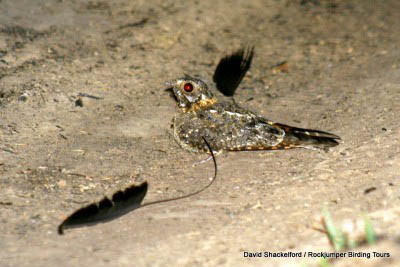
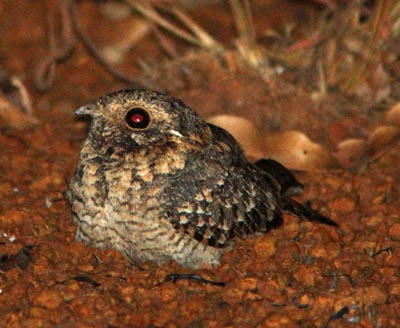
 At night, nightjars sing their oft-repeated and repetitious vocals. That of Large-tailed Nightjar — which ranges from India to New Guinea — is a very loud "chonk" or "tok", like the "sound of a hammer or axe hitting timber," given rapidly for up to 15 times in series (Coates & Bishop 1997) . The calling may be from the grounds or a perch, as shown here (left).
At night, nightjars sing their oft-repeated and repetitious vocals. That of Large-tailed Nightjar — which ranges from India to New Guinea — is a very loud "chonk" or "tok", like the "sound of a hammer or axe hitting timber," given rapidly for up to 15 times in series (Coates & Bishop 1997) . The calling may be from the grounds or a perch, as shown here (left).
